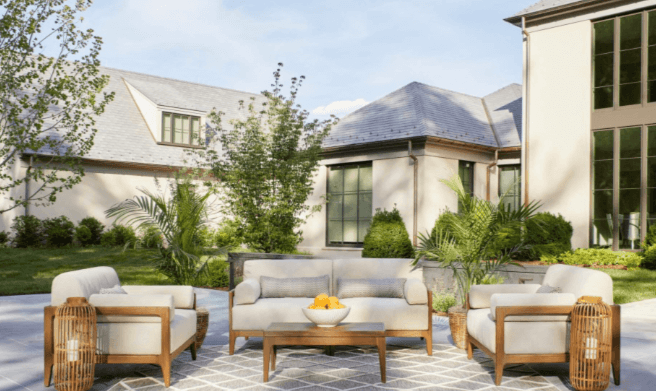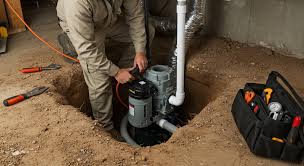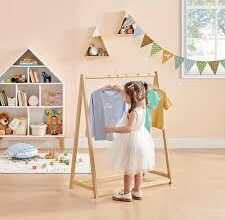A Complete Guide to Choosing Durable Outdoor Furniture for Every Climate

When it comes to furnishing your outdoor space, selecting durable furniture that can withstand various weather conditions is paramount. Whether you reside in a sunny coastal region, a humid tropical area, or a chilly mountainous locale, choosing the right outdoor furniture requires careful consideration. So, here’s a comprehensive guide to help you make informed decisions.
Understanding Different Climate Considerations
Before delving into specific types of furniture for your outdoor space, it’s essential to understand the impact of different climates on furniture durability.
- Hot and Dry Climates
In arid regions with intense sunlight, outdoor furniture can be exposed to prolonged UV exposure and high temperatures. So, look for materials like aluminium, wrought iron, or teak, which are known for their resistance to heat and fading.
- Humid and Tropical Climates
In regions with high humidity and frequent rainfall, these furniture pieces are at risk of moisture damage and mould formation. So, consider materials such as synthetic wicker, resin, or stainless steel, which demonstrate resilience against moisture and humidity.
- Cold and Wet Climates:
In colder climates where freezing temperatures and snowfall are common, choosing furniture that can withstand moisture and resist cracking is crucial. Cedar, acacia, and high-density polyethene (HDPE) are excellent choices for such environments.
Choosing the Right Materials
Selecting the appropriate materials for your furniture plays a vital role in its longevity and resilience.
- Metal
Metal furniture, including aluminium, wrought iron, and stainless steel, is widely recognised for its robustness and ability to resist rust and corrosion. Moreover, metal furniture boasts easy maintenance and cleaning, rendering it suitable for diverse climatic conditions.
- Wood
While wood adds a natural aesthetic to outdoor spaces, not all wood species are suitable for all climates. Teak, cedar, and acacia are highly durable hardwoods that withstand fluctuating weather conditions. However, treating wooden furniture with protective sealants is essential to enhance its longevity.
- Synthetic Materials
Synthetic materials like resin, polyethylene, and synthetic wicker offer excellent durability and weather resistance. These materials are often UV-stabilised, making them ideal for sunny climates, and they require minimal maintenance compared to natural materials.
- Fabric
When choosing these furnishings with fabric upholstery, opt for high-quality, weather-resistant fabrics like solution-dyed acrylic or polyester. These fabrics are fade-resistant, mold-resistant, and easy to clean, ensuring long-lasting comfort and aesthetics.
Assessing Design and Construction
In addition to material considerations, evaluating the design and construction is essential for durability.
- Frame Construction
Inspect the frame construction of these furnishings pieces to ensure sturdiness and stability. Welded joints, reinforced frames, and heavy-duty hardware are indicators of quality craftsmanship.
- Cushion Support
For furnishings with cushions, check for supportive padding and quick-drying foam inserts. Removable and washable cushion covers are also beneficial for easy maintenance.
- Assembly and Installation
Follow the manufacturer’s guidelines for properly assembling and installing these furnishings to ensure structural integrity and safety. Avoid placing them on uneven surfaces or areas prone to water accumulation.
Read also Cockroach Infestations? How Pest Control Services In Perth Can Help
Maintenance and Care Tips
Effective maintenance and care are imperative for extending this longevity in all climates.
- Regular Cleaning
Regularly cleanse them using gentle soap and water to eliminate dirt, debris, and stains. Refrain from utilising abrasive cleansers or harsh chemicals that could potentially harm the surface.
- Protective Covers
Invest in weather-resistant covers to protect them from prolonged exposure to harsh elements, especially during inclement weather or extended periods of non-use.
- Seasonal Storage
During the off-season or extreme weather conditions, consider storing them in a covered area or using storage solutions like sheds or garages to prevent damage and prolong their lifespan.
By adhering to these expert recommendations and choosing outdoor furniture suited to your specific climate and personal preferences, you’re not only investing in comfort and style but also ensuring that your outdoor space remains inviting and resilient for years to come. By meticulously evaluating materials, design, and maintenance routines, you can relish in the aesthetic appeal and utility of your outdoor sanctuary without worry, no matter the weather challenges it encounters.




